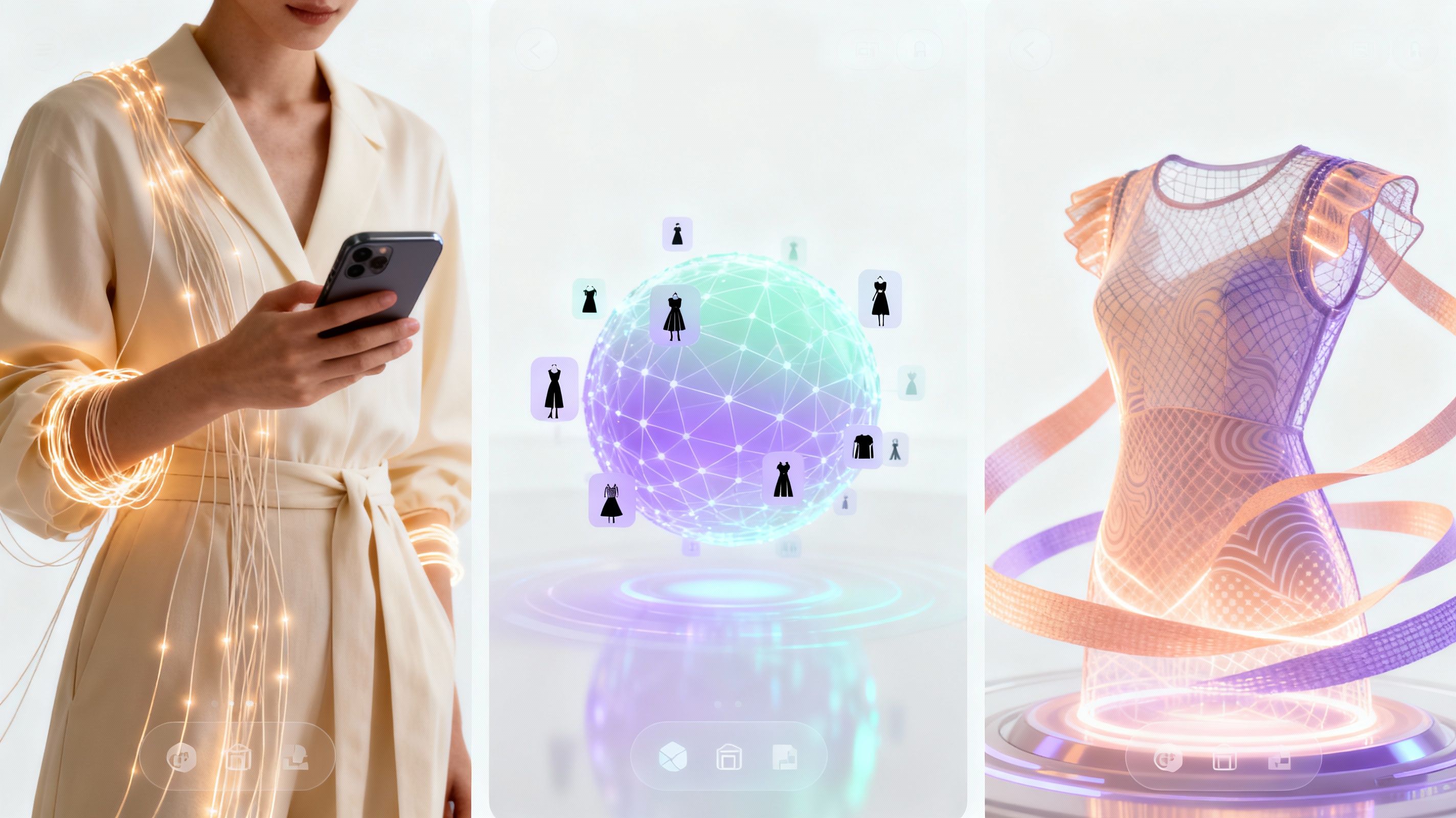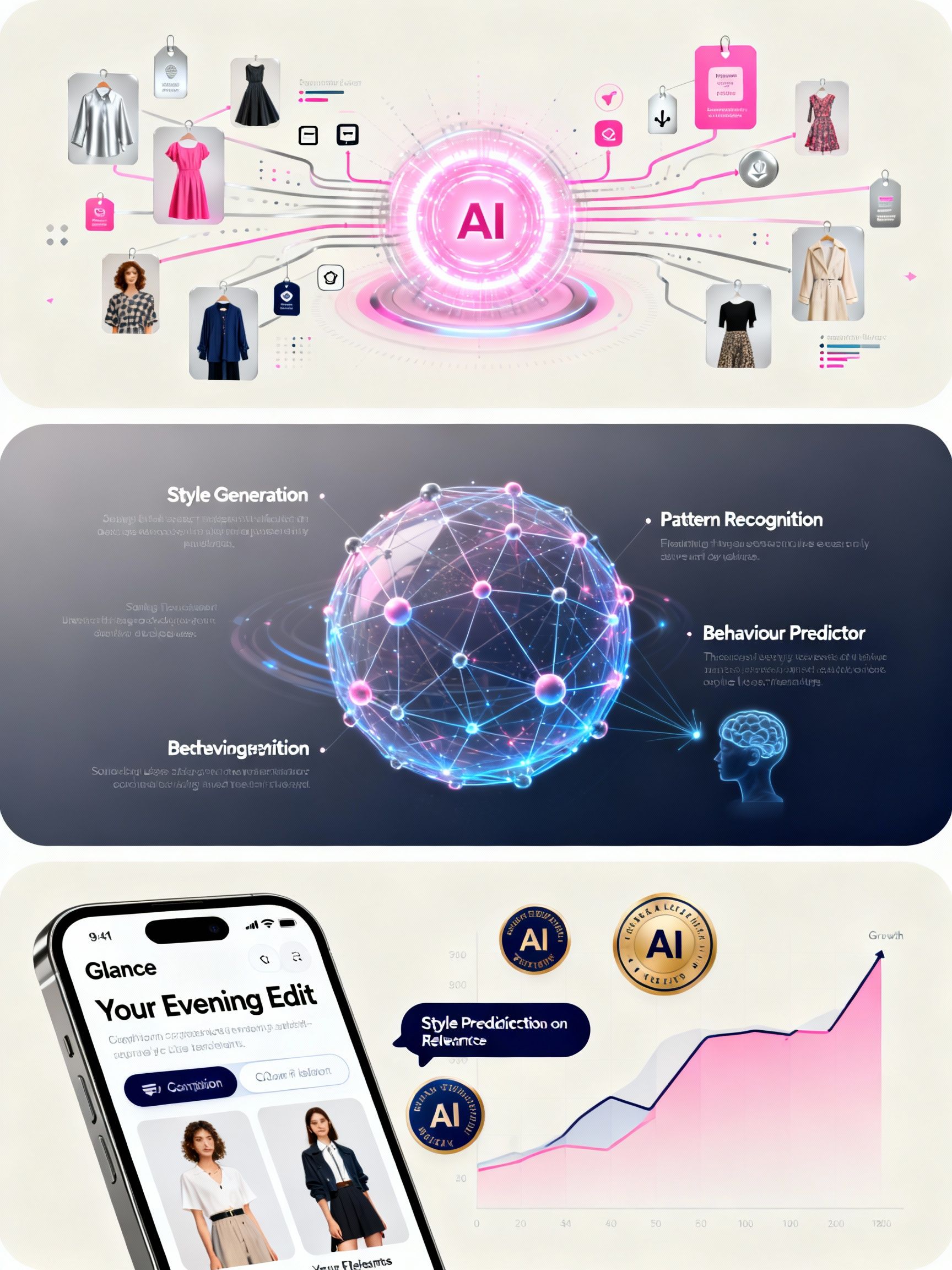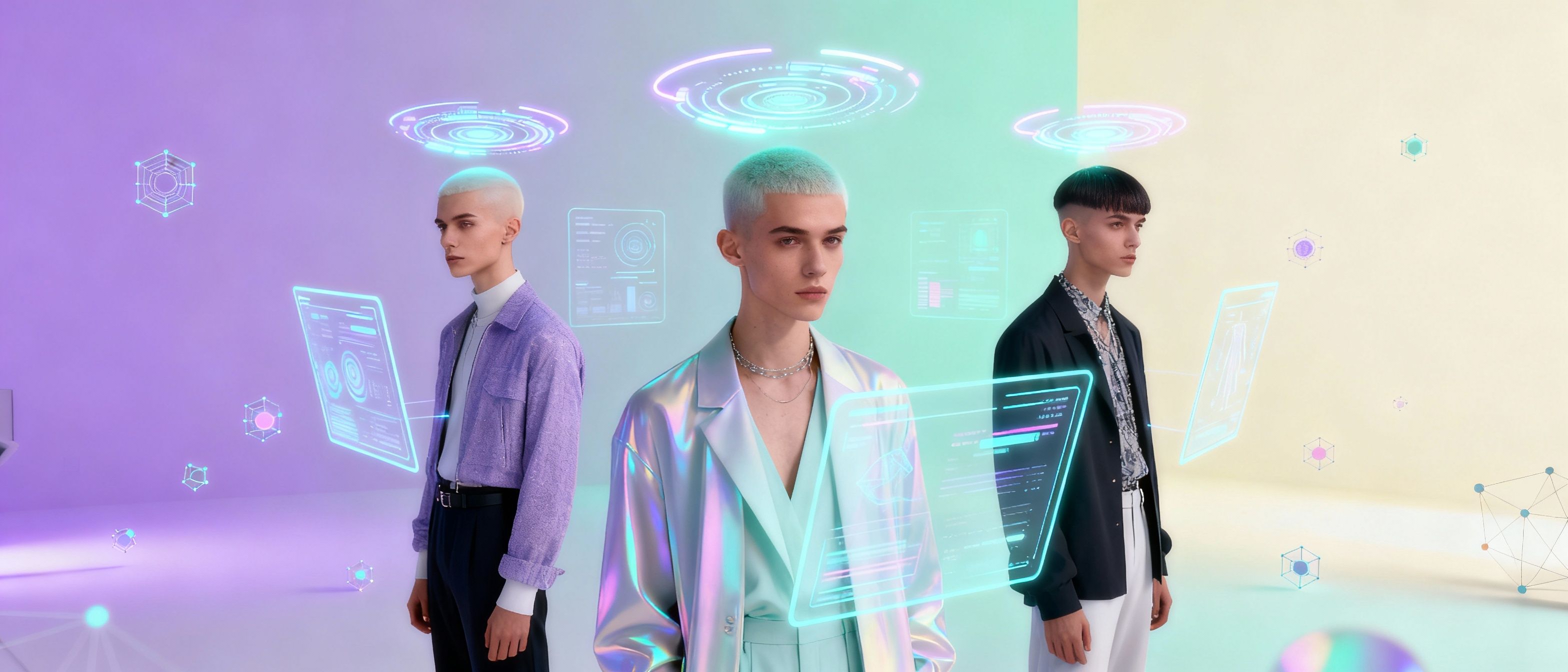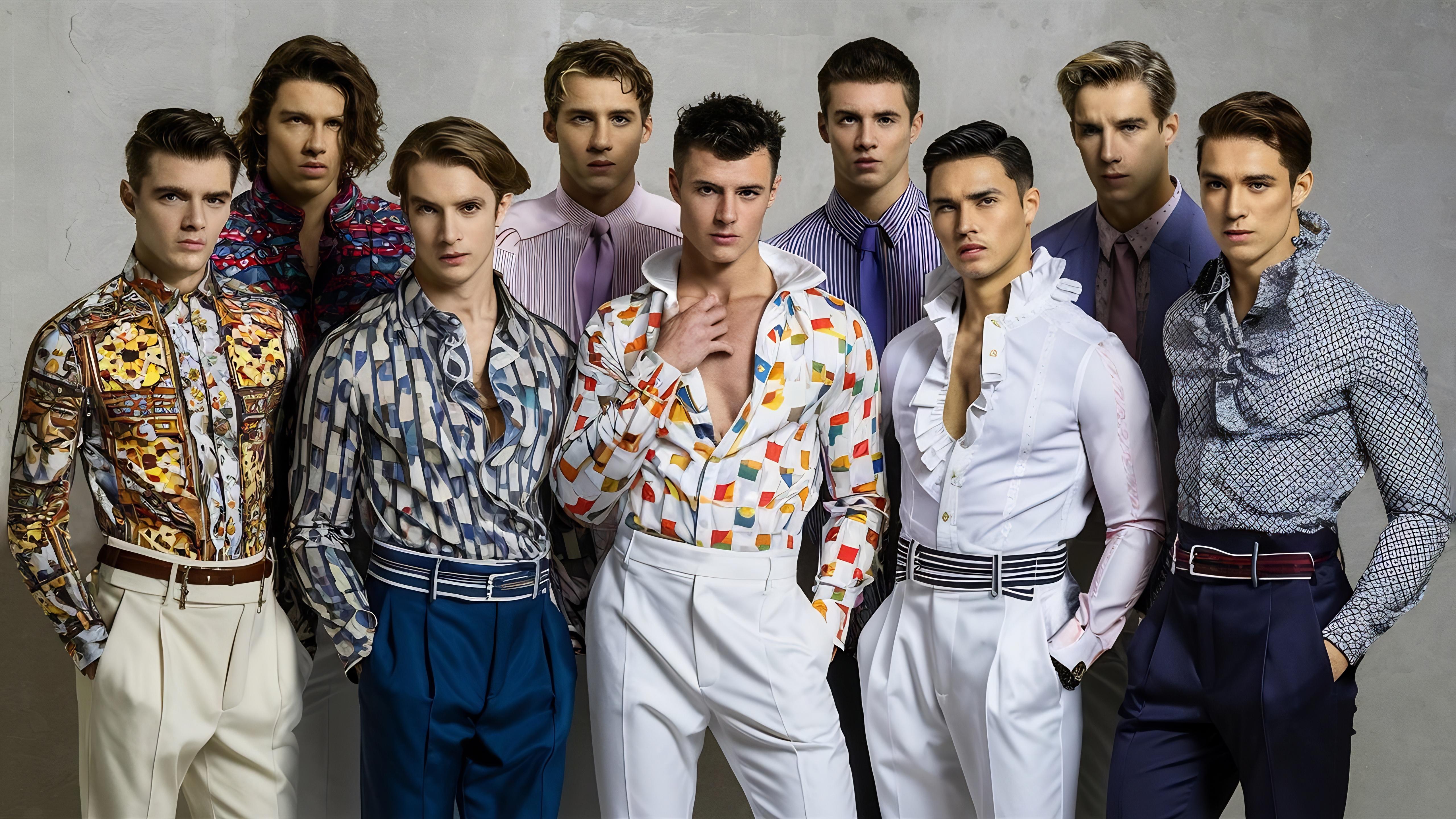Non-Binary Fashion Meets AI Identity Styling
Generative AI in Fashion: Beyond Trend Forecasting


TL;DR
- Generative AI in Fashion enables brands and platforms to recognise deep style patterns, not just chase seasonal trends.
- With AI clothing prediction, you get smarter suggestions rooted in user behaviour, archetypes and real‑time context.
- For mobile‑first users, this means discovering fashion through intelligent pattern recognition, not endless scrolling.
In today’s fast‑moving fashion ecosystem, simply following seasonal trends isn’t enough. That’s why Generative AI in Fashion is emerging as a game changer, moving from “what’s trending” to “what works for you based on patterns”. And behind the scenes, AI clothing prediction is becoming the engine that powers this shift. When a platform recognises your style archetype, your preferences, mood cues, behaviour patterns, you don’t just pick an outfit; you discover a look tailored to you.
In this article, we explore how Generative AI in Fashion and AI clothing prediction are shaping the next wave of fashion personalization, and why this isn’t just another trend cycle, but a smarter way to dress and discover.
Style Archetypes vs Quick Trends
Real style doesn’t always follow seasonal whims. It builds from patterns.
- Generative AI in Fashion shifts focus from “this season’s jacket” to “the types of jackets you’ve consistently engaged with.”
- AI clothing prediction then says: “Since you hovered on bomber‑cuts and slower scrolled through satin textures, here’s something next.”
- According to the Business of Fashion‑McKinsey & Company State of Fashion 2024 survey, 73% of fashion executives said generative AI will be a business priority this year.
- Yet only 28% had implemented it into design processes so far.
- This gap shows the opportunity: Generative AI in Fashion is still early, but ready to scale.
Archetypes over “what’s hot this month”

Instead of dressing for fleeting trends, the aim is to recognise your style archetype, for example: edgy‑minimal, tailored‑vintage, casual‑sophisticate, and build from there. When platforms embed Generative AI in Fashion and AI clothing prediction, they offer suggestions that feel familiar but evolved.
Case Study 1: Stitch Fix
Stitch Fix combines machine learning with human stylists to provide personalized clothing recommendations based on customer surveys, purchase history, and feedback. By analysing user preferences and patterns, Stitch Fix can forecast what items a customer is likely to love next, demonstrating the practical power of AI clothing prediction in real-world fashion retail. This approach ensures that each recommendation aligns with the user’s style archetype while keeping selections fresh and relevant.
How AI in Fashion & AI Clothing Prediction Work

A blend of data, signals and modelling drives smarter discovery.
- Generative AI in Fashion ingests vast fashion datasets, images, consumer behaviour, product metadata, and learns to generate new style suggestions or “look sets”.
- AI clothing prediction uses micro‑behavioural cues: dwell time, swipe speed, sequence flow, device type and time of day. These signals forecast what you’ll want next.
- The global “AI in fashion” market was estimated at USD 2.19 billion in 2024.
- Moreover, platforms leveraging AI saw massive traffic shifts: US retailers recorded a 1,200% jump in visits from generative AI sources between July 2024 and Feb 2025.
- Under the hood, the system might say: “You hovered 12 sec on a fitted leather jacket, swiped slowly through dark‑moody palettes this evening, and scrolled on your mobile left‑hand. Here’s a curated look that matches your pattern.”
Recommendation Types at a Glance
Approach | How it Works | Benefit | Example Use‑Case |
Traditional trend forecasting | Based on seasonal themes, designer releases | Predictable but generic | “Summer 2025 floral trend” lookbook |
Generative AI in Fashion | Generates outfit suggestions via pattern modelling | Personalized, adaptive | Tailored capsule drop via AI suggestions |
AI clothing prediction | Forecasts user’s next preference using micro‑signals | Real‑time, context‑aware, mobile‑friendly | Curated look for a pop‑up event tonight |
Why Mobile‑First Users Should Care
On your phone, signals are rich. Generative AI in Fashion and AI clothing prediction take advantage.
- Every swipe, tap and hover on your mobile device becomes a data point. Generative AI in Fashion interprets these to sharpen styling.
- Rather than typing “what to wear for brunch”, AI clothing prediction says “you’re likely going to brunch based on timing, mood and past behaviour, here’s your look”.
- The fashion industry is adapting: according to the State of Fashion 2025 survey, 50% of fashion executives see product discovery as the key use‑case for generative AI in 2025.
- Case Study 2: Glance Platform
On the mobile‑first platform Glance, users who hover longer on certain categories get curated “look sets” that reflect their personal archetype and moment, an example of AI clothing prediction in action.
Real‑Time Use‑Cases
- You scroll quickly through basics this morning → your feed de‑prioritises them and surfaces bold statement pieces.
- You switch devices (tablet vs phone) → the system adapts to hand‑dynamics, display size and usage patterns.
What It Means for Style & Business
Generative AI in Fashion and AI clothing prediction disrupt styling, manufacturing and retail.
- For consumers: Less time spent searching. More time discovering looks you didn’t know you wanted.
- For brands/retailers: Better alignment of inventory with desire, reducing waste and improving fit. For instance, AI‑powered retail saw research suggesting up to 40% reduction in inventory costs.
- The market outlook is strong: the generative AI in fashion market is projected to hit USD 2,230 million by 2032.
- Challenges & ethics: While 73% of execs prioritise Generative AI in Fashion, only 28% have applied it deeply.
Issues like data‑bias, over‑fitting, and creativity disruption remain.
Conclusion
The future of AI Fashion isn’t just about spotthe trend, it’s about recognising you. Through Generative AI in Fashion and AI clothing prediction, platforms become real‑time stylists: anticipating your move, feeding your mood and refining your wardrobe. For mobile‑first users, that’s a win, less search, more discovery. For brands, it’s a chance to evolve from inventory‑push to insight‑pull. The shift is happening now, and your next outfit might be less “what’s trending” and more “what’s you”.
FAQs
Q1: What is Generative AI in Fashion?
Generative AI in Fashion refers to systems that generate outfit combinations, style sets or product suggestions by recognising patterns in user behaviour, preference data and fashion‑industry inputs, moving beyond standard catalogues.
Q2: How does AI clothing prediction differ from regular recommendations?
AI clothing prediction forecasts what you’re likely to want next by analysing detailed micro‑signals (hover time, swipe speed, device type, timing), rather than merely suggesting “popular items”.
Q3: Will Generative AI in Fashion make human stylists redundant?
Not entirely. While systems can generate options and highlight patterns, human intuition, creativity and cultural context remain essential. The tech is an assist, not a replacement.
Q4: As a mobile‑first user, how can I benefit?
Your behaviours, what you hover on, how you scroll, when you open the app, feed the system. With AI clothing prediction, your mobile‑first habits result in styling suggestions that feel immediate and personal.
Q5: Is there a risk of style uniformity because of pattern‑based systems?
Yes, if models over‑learn your past without diversifying. Good systems use pattern recognition but continue introducing novelty. Ethical data usage and diversity of suggestions are critical.






